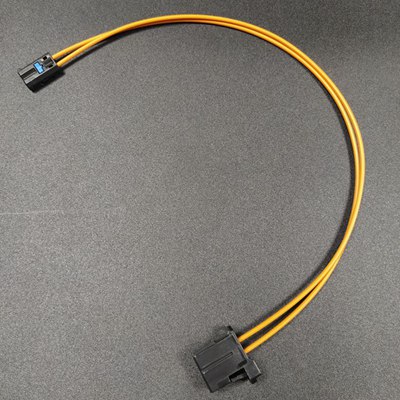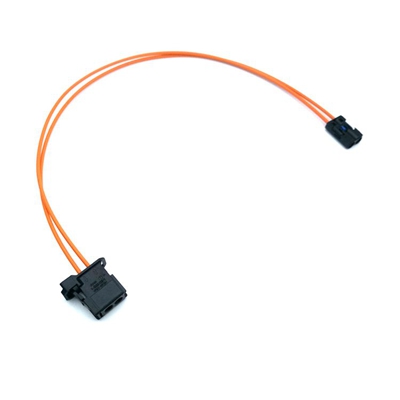



This product is a core optical cable series developed by Dongguan Jinzhi Optoelectronics (KINZ) for the needs of automotive multimedia signal transmission. It covers two core categories: MOST automotive optical fiber cables and Audi-specific automotive optical fiber patch cables. Both are made of automotive-grade plastic optical fiber (POF) and are suitable for the extreme in-vehicle environment of -40°C to 85°C. They can solve the pain points of traditional copper cables such as susceptibility to electromagnetic interference (EMI) and rapid signal attenuation. They provide stable audio, video, and control signal transmission for in-vehicle entertainment systems, navigation modules, and ADAS assistance systems. They are the preferred solution for original equipment replacement and aftermarket upgrades for high-end models (especially Audi).
Universal Car Optical Cable: Utilizes 1mm core diameter POF fiber, a numerical aperture of 0.5, and a transmission loss of ≤0.1dB/m (650nm wavelength). It supports zero-attenuation transmission within 100 meters and is suitable for in-vehicle wiring harness modifications in various vehicle models, such as signal connections from the head unit to door speakers, or from the center console to the rear entertainment screen, meeting basic transmission requirements in common in-vehicle scenarios.
MOST Automotive Fiber Optic Cable: Strictly adheres to the MOST bus standard and features an OEM-spec locking connector with a plug-in/plug-out life of ≥500 cycles and pin alignment accuracy of ≤0.1mm. It can directly connect to the bus of high-end MOST-equipped vehicles such as Mercedes-Benz, BMW, and Audi, eliminating signal interruptions or delays and ensuring the synchronized operation of in-vehicle navigation, 360° imaging, and surround sound systems.
Audi Automotive Optical Fiber Jumper: Customized for Audi vehicle wiring harness structures, the connector shell uses the same PA66+ connector as the original Audi. Made of fiberglass, it is oil-resistant and anti-aging, and is compatible with the signal interface of the Audi MMI system. It solves common problems such as "no audio" and "no navigation signal" caused by aging fiber optic patch cords in older Audi models.
Key features
Material and structure
Fiber core: high refractive index polymer
Clad: low refractive index material, forming a fully reflective transmission path.
Diameter: usually 0.5mm~1mm, thicker than glass fiber, easy to install in the car.
Transmission performance
Bandwidth: up to hundreds of MHz, meeting high-definition audio/video requirements (such as the MOST150 standard supports 150Mbps).
Wavelength: commonly used 650nm (red light) or 850nm (near infrared).
Automotive adaptation design
Vibration resistance/temperature resistance: adapt to the vehicle environment of -40°C~85°C.
Lightweight: reduce the weight of the wiring harness and optimize the wiring space.
EMI immunity: not affected by electromagnetic interference from engines, motors, etc.
Connector type
Standard MOST interface
Customized plugto ensure fast plugging and unplugging and sealing.

Typical application scenarios
High-end in-car entertainment system: surround sound, rear audio and video transmission.
In-car network: MOST bus connects host, amplifier, display and other nodes.
ADAS auxiliary system: partial sensor signal transmission.